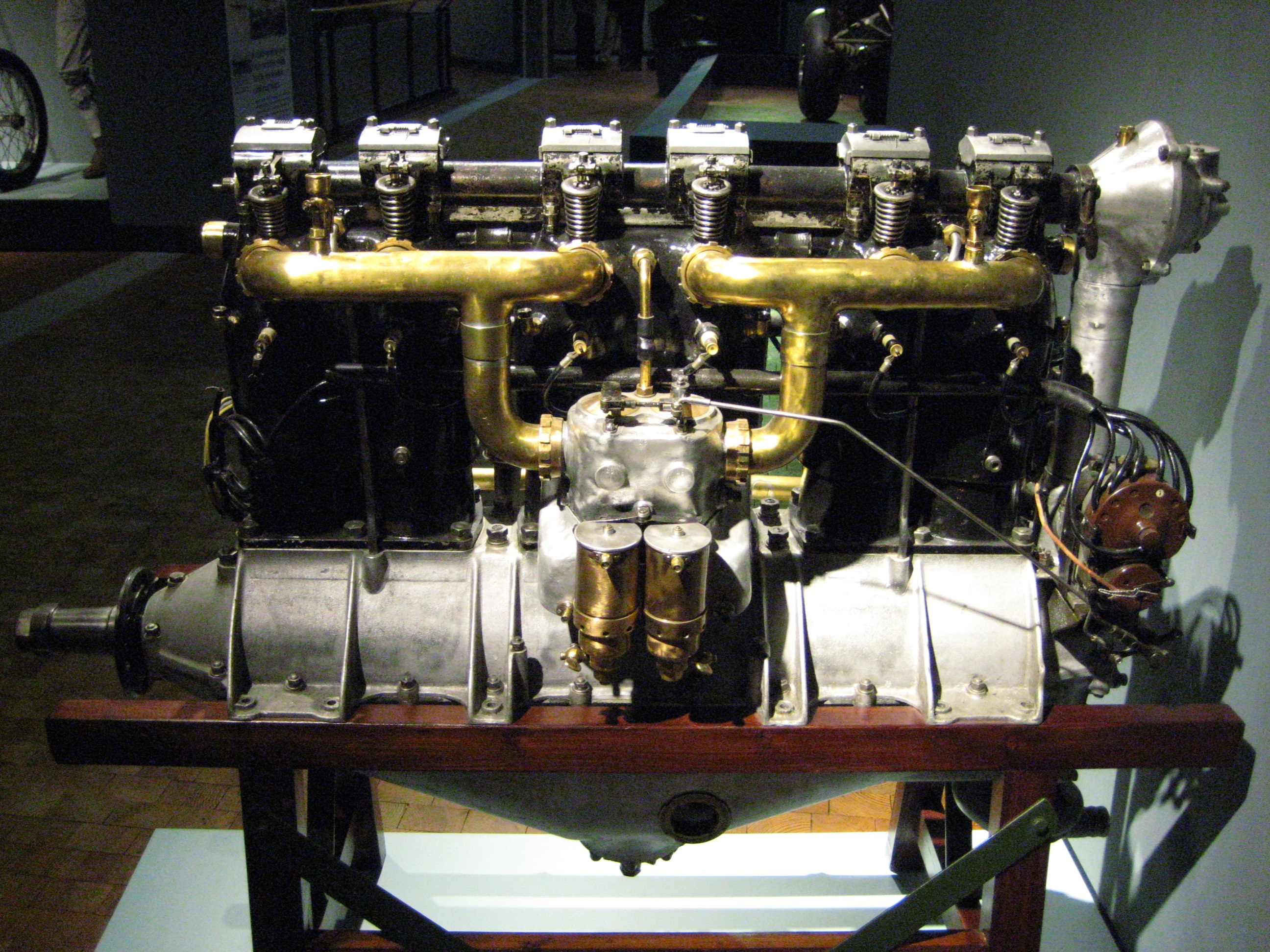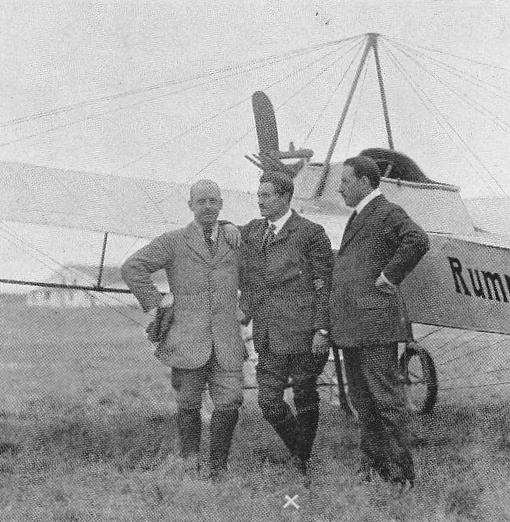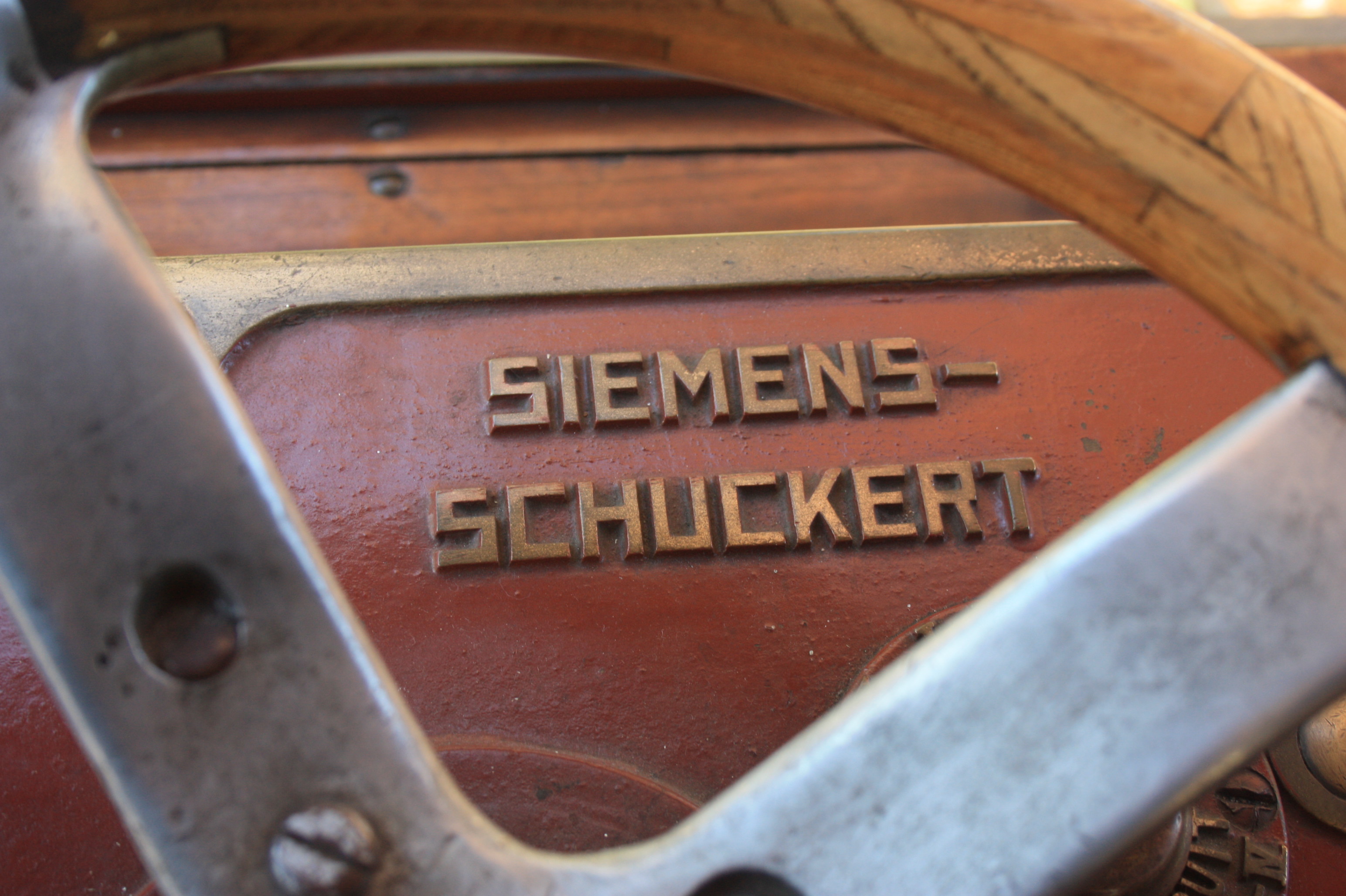|
LFG Roland D.XVII
The LFG Roland D.XVII was a single-seat, single-engine, parasol wing Germany, German fighter aircraft flown close to the end of World War I. Only one was built. Design and development The D.XVII was the last of LFG's line of single-seat fighters. It combined features of their previous two models, the LFG Roland D.XV, D.XV and LFG Roland D.XVI, D.XVI: it had the engine and fuselage of the third D.XV but was a parasol wing aircraft like the D.XVI. Despite the common configuration the wings of the D.XVI and D.XVII were different. The D.XVIIs wings had constant chord (aircraft), chord and overhung aileron#Horns and aerodynamic counterbalances, ailerons. It was mounted over the fuselage on each side with an inverted V-form strut pair from the leading edge to the lower fuselage longeron and a second strut from the rear wing spar to the same longeron further aft. The structure was stabilized laterally with a further outward leaning strut between top of the forward V-strut and the up ... [...More Info...] [...Related Items...] OR: [Wikipedia] [Google] [Baidu] |
WikiProject Aircraft
A WikiProject, or Wikiproject, is a Wikimedia movement affinity group for contributors with shared goals. WikiProjects are prevalent within the largest wiki, Wikipedia, and exist to varying degrees within sister projects such as Wiktionary, Wikiquote, Wikidata, and Wikisource. They also exist in different languages, and translation of articles is a form of their collaboration. During the COVID-19 pandemic, CBS News noted the role of Wikipedia's WikiProject Medicine in maintaining the accuracy of articles related to the disease. Another WikiProject that has drawn attention is WikiProject Women Scientists, which was profiled by '' Smithsonian'' for its efforts to improve coverage of women scientists which the profile noted had "helped increase the number of female scientists on Wikipedia from around 1,600 to over 5,000". On Wikipedia Some Wikipedia WikiProjects are substantial enough to engage in cooperative activities with outside organizations relevant to the field at issue. For e ... [...More Info...] [...Related Items...] OR: [Wikipedia] [Google] [Baidu] |
Inline Engine (aeronautics)
In aviation, an inline engine is a reciprocating engine with banks of cylinders, one behind another, rather than rows of cylinders, with each bank having any number of cylinders, although more than six is uncommon. The major reciprocating-engine alternative configuration is the radial engine, where the cylinders are placed in a circular or "star" arrangement. The term "inline" is used somewhat differently for aircraft engines than automotive engines. For automotive engines, the term ‘inline’ refers only to straight engines (those with a single bank of cylinders). But for aircraft, ‘inline’ can also refer to engines which are not of the straight configuration, such as V, H, or horizontally opposed. Inline engine configurations ;Straight: Engines with a single bank of cylinders which can be arranged at any angle but typically upright or inverted, (e.g. upright ADC Cirrus, inverted de Havilland Gipsy Major). ; V:Engines with two banks of cylinders with less than 180° betwe ... [...More Info...] [...Related Items...] OR: [Wikipedia] [Google] [Baidu] |
Parasol-wing Aircraft
A monoplane is a fixed-wing aircraft configuration with a single mainplane, in contrast to a biplane or other types of multiplanes, which have multiple planes. A monoplane has inherently the highest efficiency and lowest drag of any wing configuration and is the simplest to build. However, during the early years of flight, these advantages were offset by its greater weight and lower manoeuvrability, making it relatively rare until the 1930s. Since then, the monoplane has been the most common form for a fixed-wing aircraft. Characteristics Support and weight The inherent efficiency of the monoplane is best achieved in the cantilever wing, which carries all structural forces internally. However, to fly at practical speeds the wing must be made thin, which requires a heavy structure to make it strong and stiff enough. External bracing can be used to improve structural efficiency, reducing weight and cost. For a wing of a given size, the weight reduction allows it to fly slower a ... [...More Info...] [...Related Items...] OR: [Wikipedia] [Google] [Baidu] |
Zeppelin-Lindau D
Luftschiffbau Zeppelin GmbH is a German aircraft manufacturing company. It is perhaps best known for its leading role in the design and manufacture of rigid airships, commonly referred to as ''Zeppelins'' due to the company's prominence. The name 'Luftschiffbau' is a German word meaning ''building of airships''. The company was founded by Count Ferdinand von Zeppelin in 1908 as a formal entity to continue advancing his pioneering research into rigid airships. ''Luftschiffbau Zeppelin'' became the leading manufacturer in the field of large lighter-than-air vehicles; its products were used in both military and civilian capacities. The firm founded DELAG, the world's first airline to use an aircraft in revenue service, in 1909 on the back of public interest and using its own airships. During the First World War, Zeppelins were employed as the first long distance strategic bombers, launching numerous raids upon Belgium, France, and the United Kingdom. Following Count von Zeppelin's ... [...More Info...] [...Related Items...] OR: [Wikipedia] [Google] [Baidu] |
Rumpler D
Rumpler-Luftfahrzeugbau GmbH, Rumpler-Werke, usually known simply as Rumpler was a German aircraft and automobile manufacturer founded in Berlin by Austrian engineer Edmund Rumpler in 1909 as Rumpler Luftfahrzeugbau.Gunston 1993, p.259 The firm originally manufactured copies of the Etrich Taube monoplane under the ''Rumpler Taube'' trademark, but turned to building reconnaissance biplanes of its own design through the course of the First World War, in addition to a smaller number of fighters and bombers.Kroschel & Stützer 1994, p.100 The company, from the beginning a limited liability concern ( GmbH), became a Aktiengesellschaft in the style of ''Rumpler-Werke AG'' on 21 September 1917 with a capitalization of 3,5 million Marks. In 1918, 3300 people worked for RumplerRumpler 1919, p.63 at the Berlin headquarter and a subsidiary in Augsburg, the ''Bayerische Rumpler-Werke AG''. As a consequence of the Treaty of Versailles Germany was not allowed to manufacture aircraft. Rump ... [...More Info...] [...Related Items...] OR: [Wikipedia] [Google] [Baidu] |
Siemens-Schuckert D
Siemens-Schuckert (or Siemens-Schuckertwerke) was a German electrical engineering company headquartered in Berlin, Erlangen and Nuremberg that was incorporated into the Siemens AG in 1966. Siemens Schuckert was founded in 1903 when Siemens & Halske acquired Schuckertwerke. Subsequently, Siemens & Halske specialized in communications engineering and Siemens-Schuckert in power engineering and pneumatic instrumentation. During World War I Siemens-Schuckert also produced aircraft. It took over manufacturing of the renowned Protos vehicles in 1908. In World War II, the company had a factory producing aircraft and other parts at Monowitz near Auschwitz. There was a workers camp near the factory known as Bobrek concentration camp. The Siemens Schuckert logo consisted of an S with a smaller S superimposed on the middle with the smaller S rotated left by 45 degrees.Siemens used this as a theme for their logos with absorbed companies: Siemens & Halske's logo was a large S with a small sup ... [...More Info...] [...Related Items...] OR: [Wikipedia] [Google] [Baidu] |
Fokker D
Fokker was a Dutch aircraft manufacturer named after its founder, Anthony Fokker. The company operated under several different names. It was founded in 1912 in Berlin, Germany, and became famous for its fighter aircraft in World War I. In 1919 the company moved its operations to the Netherlands. During its most successful period in the 1920s and 1930s, it dominated the civil aviation market. Fokker went into bankruptcy in 1996, and its operations were sold to competitors. History Fokker in Germany At age 20, while studying in Germany, Anthony Fokker built his initial aircraft, the ''Spin'' (Spider)—the first Dutch-built plane to fly in his home country. Taking advantage of better opportunities in Germany, he moved to Berlin, where in 1912, he founded his first company, Fokker Aeroplanbau, later moving to the Görries suburb just southwest of Schwerin (at ), where the current company was founded, as Fokker Aviatik GmbH, on 12 February 1912. World War I Fokker capitalized o ... [...More Info...] [...Related Items...] OR: [Wikipedia] [Google] [Baidu] |
Machine Gun
A machine gun is a fully automatic, rifled autoloading firearm designed for sustained direct fire with rifle cartridges. Other automatic firearms such as automatic shotguns and automatic rifles (including assault rifles and battle rifles) are typically designed more for firing short bursts rather than continuous firepower, and are not considered true machine guns. As a class of military kinetic projectile weapon, machine guns are designed to be mainly used as infantry support weapons and generally used when attached to a bipod or tripod, a fixed mount or a heavy weapons platform for stability against recoils. Many machine guns also use belt feeding and open bolt operation, features not normally found on other infantry firearms. Machine guns can be further categorized as light machine guns, medium machine guns, heavy machine guns, general purpose machine guns and squad automatic weapons. Similar automatic firearms of caliber or more are classified as autocannons, rat ... [...More Info...] [...Related Items...] OR: [Wikipedia] [Google] [Baidu] |
LMG 08/15
The ''Maschinengewehr'' 08, or MG 08, was the German Army's standard machine gun in World War I and is an adaptation of Hiram S. Maxim's original 1884 Maxim gun. It was produced in a number of variants during the war. The MG 08 served during World War II as a heavy machine gun in many German infantry divisions, although by the end of the war it had mostly been relegated to second-rate fortress units. The ''Maschinengewehr'' 08 (or MG 08)—so-named after 1908, its year of adoption—was a development of the license made ''Maschinengewehr'' 01. The firing rate depends on the lock assembly used and averages 500 rounds per minute for the Schloss 08 and 600 rounds per minute for the Schloss 16. The gun used 250-round fabric belts of 7.92×57mm ammunition. It was water-cooled, using a jacket around the barrel that held approximately of water. Using a separate attachment sight with range calculator for indirect fire, the MG 08 could be operated from cover. Additional telescopic sight ... [...More Info...] [...Related Items...] OR: [Wikipedia] [Google] [Baidu] |
Synchronization Gear
A synchronization gear (also known as a gun synchronizer or interrupter gear) was a device enabling a single-engine tractor configuration aircraft to fire its forward-firing armament through the arc of its spinning propeller without bullets striking the blades. This allowed the aircraft, rather than the gun, to be aimed at the target. There were many practical problems, mostly arising from the inherently imprecise nature of an automatic gun's firing, the great (and varying) velocity of the blades of a spinning propeller, and the very high speed at which any gear synchronizing the two had to operate. In practice, all known gears worked on the principle of actively triggering each shot, in the manner of a semi-automatic weapon. Design and experimentation with gun synchronization had been underway in France and Germany in 1913–1914, following the ideas of August Euler, who seems to have been the first to suggest mounting a fixed armament firing in the direction of flight (in 191 ... [...More Info...] [...Related Items...] OR: [Wikipedia] [Google] [Baidu] |
Fokker V 29
The Fokker E.V was a German parasol-monoplane fighter aircraft designed by Reinhold Platz and built by Fokker-Flugzeugwerke. The E.V was the last Fokker design to become operational with the ''Luftstreitkräfte,'' entering service in the last months of World War I. After several fatal accidents due to wing failures, the aircraft was modified and redesignated Fokker D.VIII. Dubbed the ''Flying Razor'' by Allied pilots, the D.VIII had the distinction of scoring the last aerial victory of the war. Design and development In early 1918, Fokker produced several rotary-powered monoplane prototypes, submitting V.26 and V.28, small parasol-winged monoplanes with his usual steel-tube fuselages, for the second fighter trials at Adlershof in May/June 1918. V.28 was tested with the 108 kW (145 hp) Oberursel Ur.III and 119 kW (160 hp) Goebel Goe.III, though neither of these engines were ready for operational service. The V.26 used the standard Oberursel Ur.II engine, produci ... [...More Info...] [...Related Items...] OR: [Wikipedia] [Google] [Baidu] |
Adlershof
Adlershof (, literally "Eagle's Court") is a locality (') in the borough (') Treptow-Köpenick of Berlin, Germany. Adlershof is home to the new City of Science, Technology and Media ( WISTA), located on the southwestern edge of the locality. History A part of the area known today as the "City of Science, Technology and Media", was once known as the Johannisthal Air Field. Germany's first motorized aircraft took off from here at the beginning of the 20th century. Albatros, Fokker, Rumpler and Wright made Adlershof-Johannisthal famous. In 1912 the German Experimental Institute for Aviation (Deutsche Versuchsanstalt für Luftfahrt – DVL) made Adlershof its headquarters. Laboratories, motor test beds, wind tunnels and hangars were erected in the 20s and 30s and are historical landmarks today. World War I Adlershof is particularly well known for a series of competitions between various aviation firms' fighter aircraft designs that were held there starting in 1918. This was the first ... [...More Info...] [...Related Items...] OR: [Wikipedia] [Google] [Baidu] |











